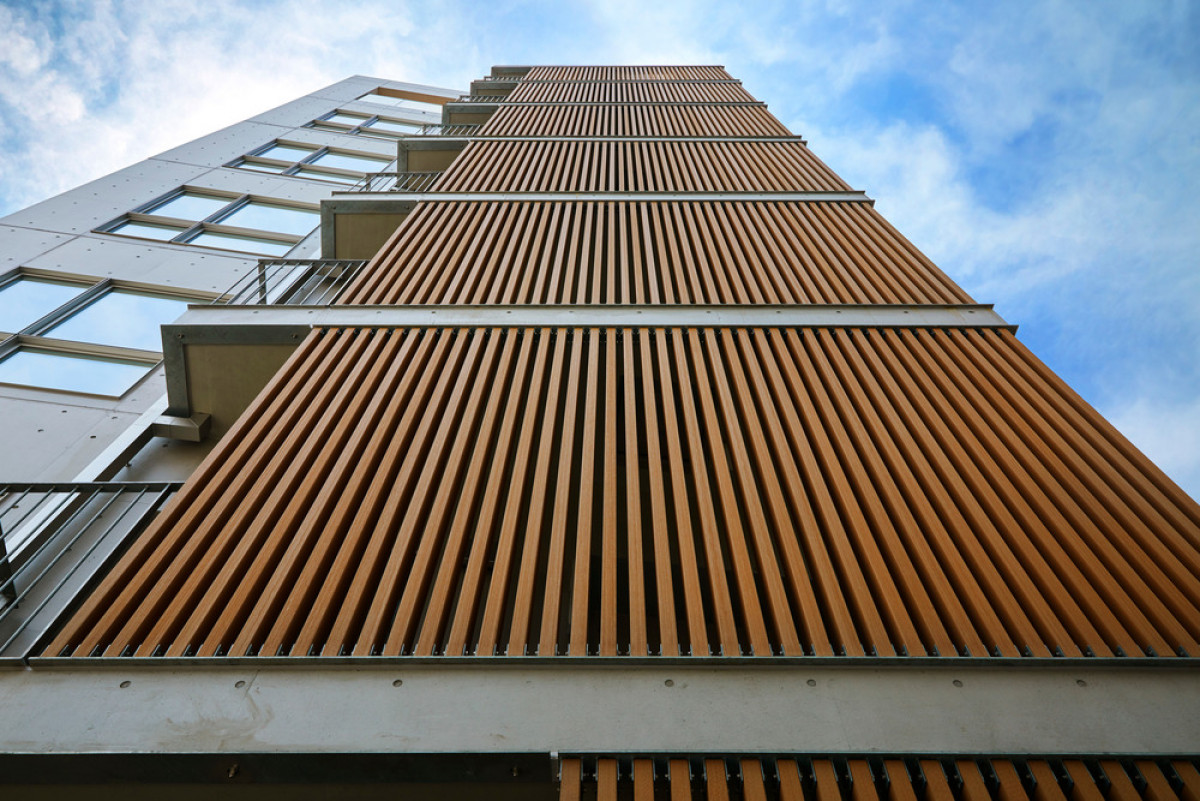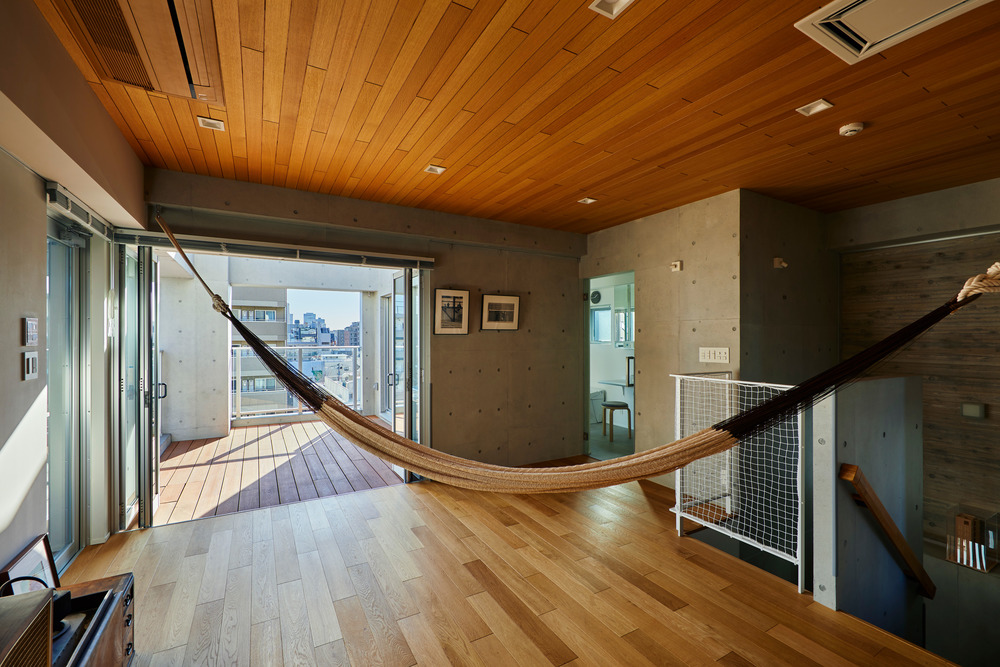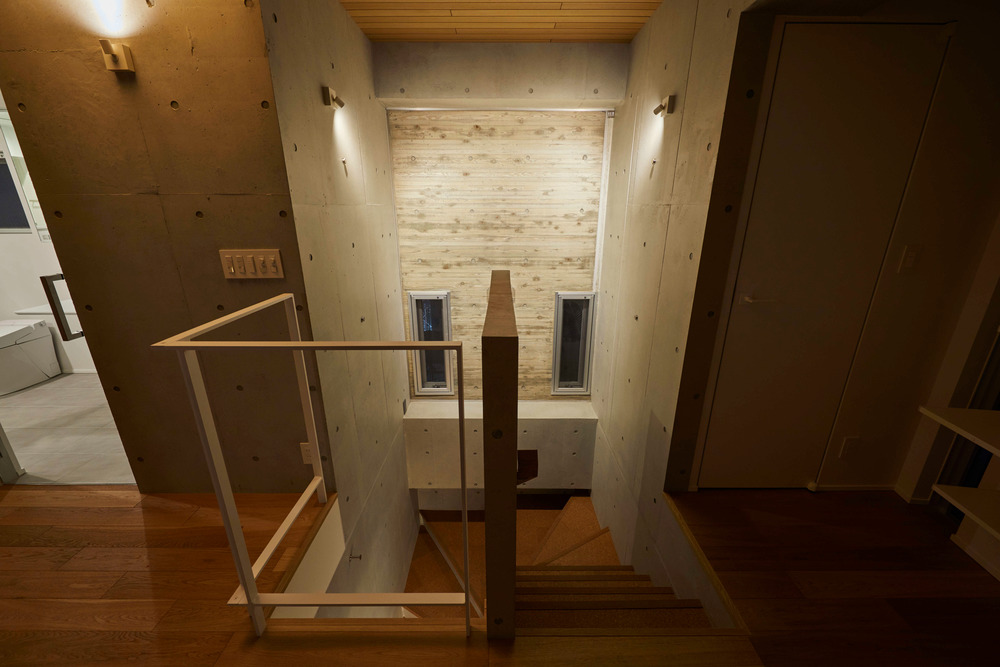03 Feb 2023

The project consists of a rebuild of a residential building on a small site of Tokyo *KIBA. For the adaptation of a variety of lifestyles, and to provide added value to the building, the firm designed multiple spaces using maisonnette-style housing as exceptional cases to the building standard law. Additionally, the firm attempted to balance the building in harmony with the historic site of KIBA, known for its lumber dealings. In doing so, the firm attempted to establish new values and lifestyles in the interior spaces, while preserving and presenting the structure's historical and cultural heritage on the exterior.
Also Read | 5 Innovative ways to incorporate Japanese architectural elements in the Indian home decor
*KIBA: Name of a place. "KI" means wood, and "BA" means town.

Tokyo has been witnessing deterioration problems lately with old buildings, as well as excessive open spaces on small sites. Many properties have been wiped out by urban renewal. For this project, the firm endeavoured to explore the possibilities for developing a small residence on a small site in the centre of Tokyo.
Also Read | Kareena Kapoor Khan’s new home in Bandra with European styled decor & wooden detailing
To adapt a variety of lifestyles to the city, as well as to maximize the potential of the small building, the firm designed the structure with multiple lifestyle spaces, despite the size restrictions of the site. The result is the creation of three different types of housing in a single building: Single-dweller residences (Type A), housing for couples (Type B) and accommodations for families with children (Type C). Despite the relatively small building size, the achievement of different types of housing contributes to a sense of community within the heart of the city.
Re-creating the landscape of Edo Tokyo KIBA
As for the site itself, due to the vastness of the land, with access to water in the centre of Edo Tokyo, numerous lumber retailers historically stored their lumber in front of the structure, including some leaning up against the main entrance of KIBA. However, as most of the businesses migrated to the New-KIBA location in 1981, that original landscape changed. With that in mind, the facade of the building was designed to reflect the image of the original KIBA landscape, with a focus on two distinct characteristics: its latticework and wooden louver.
The design of the grid windows and sashes is derived from Kouraiya latticework, one of the most iconic latticework styles of the Edo period. The wooden louver recalls the original landscape of KIBA when lumber still leaned vertically against the entrance of a retail shop.
Also Read | Interior stylist Bhawana Bhatnagar on smart lockers at residential spaces
KIBA Tokyo Residence
The firm's approach to the interior and exterior design of the building took all of the aforementioned factors into account, with a focus on creating a small residential complex in a city, while endeavouring to re-create the landscape of Edo Tokyo KIBA.
KIBA Tokyo Residence is designed for the creation of new memories, while simultaneously ensuring that the original KIBA landscape will remain in people's memories in the future. This architectural concept would become a model of global architecture.
Also Read | Interior stylist Bhawana Bhatnagar on smart lockers at residential spaces
The structural design focused on the construction of a seven-story reinforced concrete building, with four columns embedded in a small site with the fragile ground. The large opening (Low-E double glazing) facing directly south allows abundant sunlight to pour in, creating a comfortable indoor environment, especially in winter.

The wooden louvers, each about three meters in length and twenty-three meters high (max), are supported by wind pressure and load-bearing capacity considerations to the upper and lower ends to replicate the old landscape feature of lumber stacked against the front of the store. The wooden louvers are made of recycled wood, adding a significant sustainable and environmentally responsible component to the project.
Also Read: 7 Simple steps to Declutter your Work Space
Technical sheet